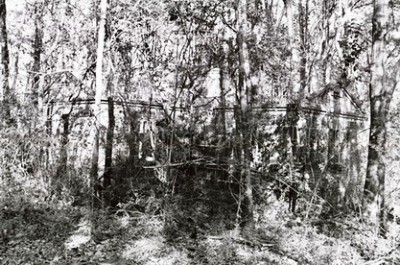
Alright, so maybe the brick factory was already dead, but now even its corpse is not long for the world. We've been to the brick factory before, and I've even said a little about the Hammond's Ferry development. But, as ground was officially broken in April for the first phase of the Hammond's Ferry riverfront project, which will render the entire area virtually unrecognizable in a couple of years, we'll take a final look. Houses, restaurants, shops, and offices--1,000 units-worth altogether--are on the way. These are all shots from my last trip back in December. I led off with this building last time, but this is the view from the back. It's in there somewhere.
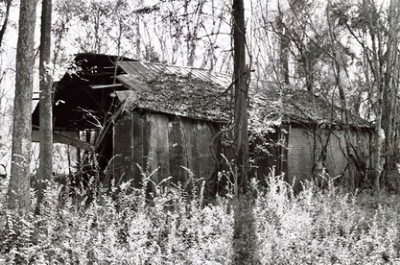
Let's go WWAAAYY back. In 1540, Hernando DeSoto and his party had been lost for some time in the wilds of Georgia. Even their Indian guides didn't know where they were anymore. On April 21, they crossed the Savannah River near Augusta, probably a bit to the west of the Savannah River Site. The crossing was known as Point Comfort, which is ironic, as comfort was in short supply. Here, DeSoto met the friendly Cofachiqui Indians. Well, they were friendly as long as you weren't from a rival indian tribe. If you were, they'd sever the nerves in one of your feet so you couldn't run away, and hold you as a slave for life.
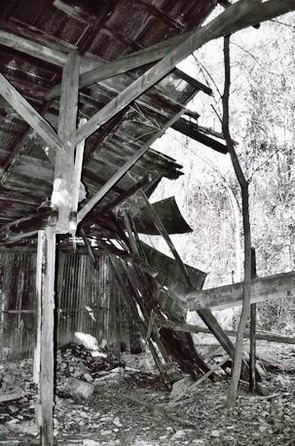 But Hernando was really only interested in getting rich, and became upset once it was clear that the Cofachiqui didn't have any silver, nor knew where to get any. So, with nothing else to do, DeSoto and his men started digging up graves to get at the freshwater pearls that dead people were given. In one grave, amidst the dirt and stones, they found the belongings of DeSoto's brother, Ayllon. Ayllon, it turns out, had unsuccessfully tried to settle in the area a number of years previously, but had died of a nasty bout of plague of one sort or another. As a result, scores of indians had also died of the plague, and many villages had been abandoned. In any case, Hernando was saddened to find the personal effects of his dead brother. To console himself, he kidnapped the Cofachiqui's queen, Cacique, and made-off with 14 bushels of pearls. Many of DeSoto's party had been enjoying themselves and wanted to stay with the Cofachiqui, but Hernando got them moving through SC, and eventually into North Carolina and Tennessee.
But Hernando was really only interested in getting rich, and became upset once it was clear that the Cofachiqui didn't have any silver, nor knew where to get any. So, with nothing else to do, DeSoto and his men started digging up graves to get at the freshwater pearls that dead people were given. In one grave, amidst the dirt and stones, they found the belongings of DeSoto's brother, Ayllon. Ayllon, it turns out, had unsuccessfully tried to settle in the area a number of years previously, but had died of a nasty bout of plague of one sort or another. As a result, scores of indians had also died of the plague, and many villages had been abandoned. In any case, Hernando was saddened to find the personal effects of his dead brother. To console himself, he kidnapped the Cofachiqui's queen, Cacique, and made-off with 14 bushels of pearls. Many of DeSoto's party had been enjoying themselves and wanted to stay with the Cofachiqui, but Hernando got them moving through SC, and eventually into North Carolina and Tennessee. 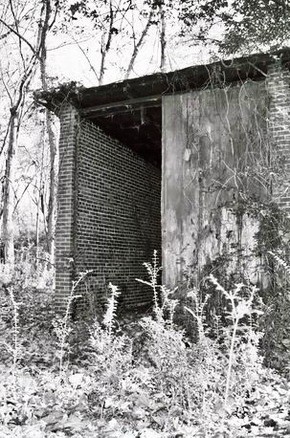 Long after DeSoto and the Spanish, in 1685, the first English colonists in the Augusta area founded Savanno/Savanna Town, which is the present-day location of Beech Island. Savanna Town soon became the major outpost of indian trade in South Carolina. In fact, the name of the town (and, later, the river) came from a Shawnee Indian tribe, known as the Savanna Indians. At that time, the Savannah River was called the Westobou. Savanna Town was a regional center for fur trading, in particular, and trails linked the town, through deep wilderness, to indian villages in Georgia, Alabama, Mississippi, and North Carolina. Furs were traded for European goods, and settlers then shipped the pelts and what-not to Charleston. In 1716, Fort Moore was built to guard against any threat to trade that might arise in the western part of SC. George Galphin built a trading post nearby in 1760, which became Fort Galphin during the Revolutionary War.
Long after DeSoto and the Spanish, in 1685, the first English colonists in the Augusta area founded Savanno/Savanna Town, which is the present-day location of Beech Island. Savanna Town soon became the major outpost of indian trade in South Carolina. In fact, the name of the town (and, later, the river) came from a Shawnee Indian tribe, known as the Savanna Indians. At that time, the Savannah River was called the Westobou. Savanna Town was a regional center for fur trading, in particular, and trails linked the town, through deep wilderness, to indian villages in Georgia, Alabama, Mississippi, and North Carolina. Furs were traded for European goods, and settlers then shipped the pelts and what-not to Charleston. In 1716, Fort Moore was built to guard against any threat to trade that might arise in the western part of SC. George Galphin built a trading post nearby in 1760, which became Fort Galphin during the Revolutionary War. In 1770, Campbell Town, SC was founded, and its existence is directly relevant (finally!) to these photos. Enter John Hammond, the father of Campbell Town. Or was his name Leroy Hammond? No one really knows for sure, so we'll call him Mr. Hammond. (Update: It was John. Leroy was the name of his uncle...and a cousin.) Anyway, Campbell Town (why not Hammond Town?) was established near where the 13th St. bridge is today,
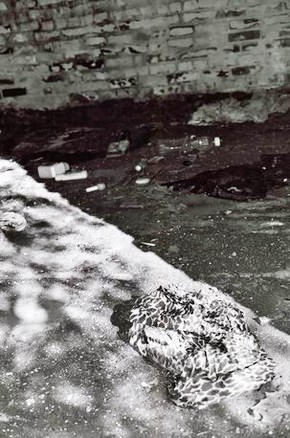 and likely encompassed the land the brick factory sits on now. Mr. Hammond decided to get into shipping and storing stuff, mostly agricultural products. To this end, he built some warehouses in what is now Harrisburg, GA, and soon found himself in very stiff competition with Ezekiel Harris, who, through the tobacco market, was trying to establish his own town to rival Augusta. Hammond also started a ferry service that turned out to be quite successful. However, in 1799, Mr. Hammond was killed under very mysterious circumstances, and his death never fully explained. What is known is that Ezekiel Harris suddenly found himself with a bit more breathing room. In my original post, I mentioned that a woman, probably a prostitute, had been living (and possibly working) in this outbuilding.
and likely encompassed the land the brick factory sits on now. Mr. Hammond decided to get into shipping and storing stuff, mostly agricultural products. To this end, he built some warehouses in what is now Harrisburg, GA, and soon found himself in very stiff competition with Ezekiel Harris, who, through the tobacco market, was trying to establish his own town to rival Augusta. Hammond also started a ferry service that turned out to be quite successful. However, in 1799, Mr. Hammond was killed under very mysterious circumstances, and his death never fully explained. What is known is that Ezekiel Harris suddenly found himself with a bit more breathing room. In my original post, I mentioned that a woman, probably a prostitute, had been living (and possibly working) in this outbuilding.Mr. Hammond's death meant doom for Campbell Town, as Augusta continued to upgrade its shipping and storage facilities and C-Town did not. The town languished until about 1811, but has since sunk without a trace beneath the rippling waves of history. While Campbell Town is long gone, Hammond has lived on for over 200 years through Hammond's Ferry, the bit of woods pictured here that bears his name.
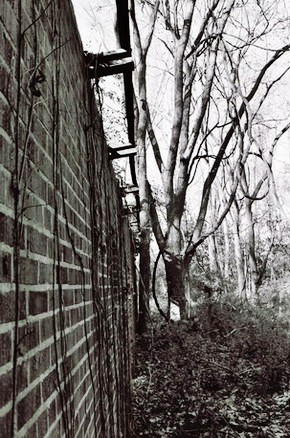 And though, like Campbell Town, these woods are now doomed, Mr. Hammond will gain an even more prestigious immortality via the Hammond's Ferry riverfront project. We should be all so lucky. In the meantime, there's been some difficulty in figuring out just how to get all the bricks out of Hammond's Ferry. There's an awful lot of them and, of course, they do have to go. The brick factory is dangerous and, as more people come into the area, the likelihood that someone will get hurt grows. There's lots of small brick tunnels that a kid could easily crawl into, which would be bad. I, of course, would've loved to get into them, but, upon trying, found that I was probably 3 feet too tall and much too wide. Thus, failure. It's probably just as well.
And though, like Campbell Town, these woods are now doomed, Mr. Hammond will gain an even more prestigious immortality via the Hammond's Ferry riverfront project. We should be all so lucky. In the meantime, there's been some difficulty in figuring out just how to get all the bricks out of Hammond's Ferry. There's an awful lot of them and, of course, they do have to go. The brick factory is dangerous and, as more people come into the area, the likelihood that someone will get hurt grows. There's lots of small brick tunnels that a kid could easily crawl into, which would be bad. I, of course, would've loved to get into them, but, upon trying, found that I was probably 3 feet too tall and much too wide. Thus, failure. It's probably just as well. 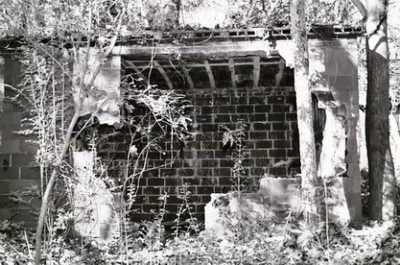
So, that's about it for the brick factory. You know, I don't make this stuff up, it just seems that at every turn I find some sordid little detail. I don't go out of my way to document death, disease, and insanity. Well, okay, maybe just a little. But it might just be the CSRA itself. And no-one is immune, really. For example, Cliff Roberts, who co-founded Augusta National Golf Course with golf legend Bobby Jones, Jr., one day walked out to the 3rd hole on the Par 3 Course and shot himself in the head. And he was from New York! As an aside, there's a funny golf story about Dwight Eisenhower and Vice-President Richard Nixon. Eisenhower, who apparently didn't think much of his VP, would never invite Nixon along when he went to play golf. But Nixon was always asking to play, and so on one occasion Ike agreed to let him shoot a round at Augusta National. However, Ike was livid when Tricky Dick missed the tee-time and was nowhere to be found for the duration of the game. At the end of the round, the entourage found Nixon at the clubhouse, wearing sunglasses and nursing a hangover. It was Nixon's first and last visit to Augusta National. More here.
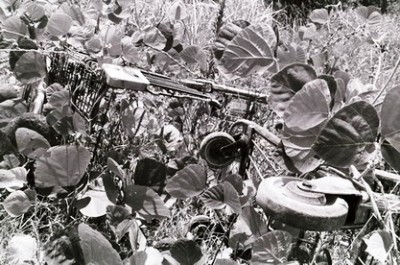
Okay, I'm off to see the Handsome Family. If you like country music (un-modern, downright gothic), fantastically morbid lyrics, and a wicked sense of humor, I highly recommend them. To wit: "Evel Knievel flew up from dead grass, I loved him better each time he crashed." If you can't get behind that, the King of Pop would like to speak with you about making a donation to his legal defense fund. Really, the Handsome Family would make a great soundtrack for City of Dust. They have songs about parking lots, bottomless holes, forgotten lakes, and haunted convenience stores. It was from just such a store that these shopping carts escaped and dragged themselves to the edge of the Augusta Canal. However, lacking the wherewithal to finally throw themselves in, they sorta collapsed in a heap on the bank. Good night.
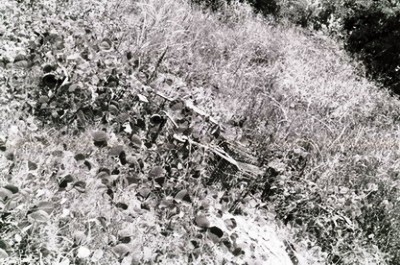
Excellent tales and excellent research, as always.
ReplyDeleteI know why you keep going back to the brickyards, it is just a fun place to be for anybody with a little bit of explorer in his heart. Every time I go I cannot resist carrying out a couple of 5 gallon buckets of old bricks or pieces of pottery. The bulldozers have been threatening for the last couple of years so the only thing that will be saved is what I carry away.
ReplyDeleteA ledger book for Hammond's general store in Campelltown still exists. It runs through the 1790's. It surprised me that they were dealing in your typical Indian trade goods. I just have trouble thinking of this area as being the 'Wild West' once upon a time, but it was. Anyway Hammond was buying animal skins and selling knivers, powder, and shot right up to the year 1800. I guess these were hunters coming in from Alabama and Mississippi, where else would they go besides Augusta? Anyway I guess the Cotton economy 15 years later wiped all of that out - why waste your time buying possum skins when there is real money to be made!
I saw something else about Leroy Hammond in a book about the South Carolina Legislature. Farmers who had suffered through the war and Thomas Browne complained that now Leroy Hammond was trying to run them off. I guess you can never have enough....
Hmmm... the Augusta Metro Spirit had an interesting article this week, 16 June 2005. Titled "The Rising - It's Only a Matter of Time" it posits the idea that development on the far side of the river is awful close to the water. The cover showed a photo of the Riverwalk's Jessye Norman Ampitheater, flooded to the bottom of the lowest seats in the 1990 flood, during a flood surge of 43000 cfs. A 1964 flood produced a rate of 87000 cfs with a flood stage of 135 feet, or 1 foot below foundations being built today. The water control manager of the Corps of Engineer Savannah District says the worst case design for their system is 180000 cfs at Augusta.
ReplyDeleteHow shortsightedly we bemoan the loss of our brickyard, little knowing how well we have provided for the future. You should really have more faith.